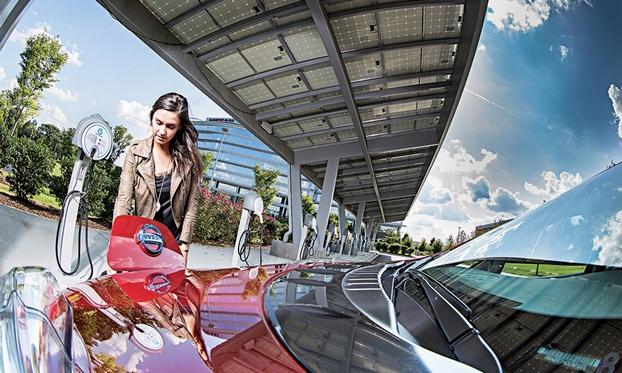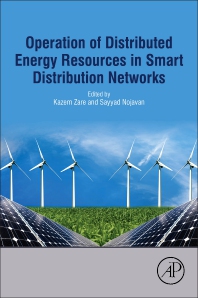The following article is a good summary on where things stand on EV development as we head into 2015.
Industry ‘can’t give up on EVs’
Despite cheap gas, developers press on
Automakers remain under regulatory pressure to make giant gains in the average fuel economy and emissions of their U.S. fleets by the 2025 model year.
Automotive News
January 5, 2015
With gasoline selling for less than $2 a gallon in some states, it’s fair to ask whether the industry’s investment in electric vehicles has been an expensive blunder.
That is the question pundits are beginning to mutter as world oil prices crash. The industry’s multibillion-dollar leap to EVs and greener fuel-efficient cars five years ago was triggered by rising fuel prices and a strident new environmental awareness that seemed to sweep the planet.
A study commissioned by the National Association of Convenience Stores — a business sector heavily reliant on gasoline sales — reported in December that interest in alternative-fuel vehicles is declining as gasoline prices fall. Its study found that among consumers who say they are interested in an alternative-fuel vehicle, 34 percent said in November they would consider an electric car, compared with 55 percent in April.
But plummeting pump prices aside, two facts haven’t changed, carmakers and analysts say: Automakers remain under regulatory pressure to make giant gains in the average fuel economy and emissions of their U.S. fleets by the 2025 model year. And delivering those gains will require some level of electric-drive market penetration.
“Nobody can predict the price of oil,” warns Carlos Ghosn, CEO of Nissan Motor Corp., the global EV segment leader. “But there is one thing which is not going to change: The emission problem is getting more and more serious. The restrictions coming from regulation are going to get tougher. There is no way you’re going to meet these emissions restrictions and regulations without zero emissions.”
The BMW i8 plug-in hybrid is among several high-end electrified vehicles on the market or slated for introduction.
And so the EV investment goes on.
• General Motors confirmed in October that it will offer a new-generation EV in addition to its Chevrolet Volt plug-in hybrid and the West Coast-only Chevrolet Spark EV. Expectations are that the additional EV will be a version of the 2017 Chevrolet Sonic.
• GM also has signaled that it is developing a second-generation Volt, with enhanced battery range. Through November, Volt sales fell 16 percent in 2014 to less than 20,000 cars.
• In early December, Bloomberg reported that Volkswagen has acquired a 5 percent stake in the emerging Silicon Valley battery developer QuantumScape Corp. QuantumScape is pouring resources into solid state battery technology, which could overcome some consumer concerns over EVs, such as battery life and high temperatures. Neither VW nor QuantumScape is commenting on the reported investment. But it demonstrates VW’s growing zeal to produce EVs in the years to come, beyond the e-Golf the company rolled out in 2014.
• Ghosn revealed on a Japanese TV broadcast in November that Nissan is preparing for a second-generation EV battery that will “double” the battery range of the current Nissan Leaf, which is rated by the EPA at 84 miles for a full charge for 2015. Nissan has so far invested $5 billion in the global production and sale of the Leaf. It constructed a $1.6 billion factory in Smyrna, Tenn., with plans to produce 200,000 EV batteries a year. The Leaf’s 2014 U.S. volume is likely to total approximately 30,000.
• And meanwhile, upstart EV maker Tesla Motors recently began recruiting the first 300 workers for its proposed battery gigafactory in Sparks, Nev., which it announced in 2014. That plant alone will require investment of $5 billion to reach full operation in 2017, employing 6,500 workers to turn out 500,000 batteries a year. Tesla was on track to sell fewer than 30,000 cars in the United States last year. In December, Morgan Stanley analyst Adam Jonas predicted in a report to investors that Tesla will fall far short of its target of selling 500,000 vehicles annually in 2020.
No sales surge
Despite the escalating investment, EVs will be a challenging market equation for a while, says Kevin Riddell, head of powertrain forecasting for LMC Automotive in suburban Detroit. LMC’s latest market forecast anticipates a decline in EV sales in 2015 — down slightly to 60,000, compared with around 61,000 in 2014.
If so, that seemingly negligible decline of just 1,000 sales would be significant for two reasons: It would reverse the young segment’s steady, multiyear growth — and do so even as more competitors are entering the field, including Volkswagen and BMW.
And it would mean that a new California initiative to spur EV adoption was not affecting U.S. sales as a whole.
For the 2015 model year, a California mandate requires large automakers to obtain zero-emission vehicle carbon-reduction credits equal to 3 percent of their state sales, compared with less than 1 percent previously.
The complex emission-credit system is not a simple apples-to-apples equation that translates directly to car sales. But it does turn up the heat on automakers to make more of an EV effort there this year.
But even against this rising pressure, LMC envisions a decline in EV sales nationally.
LMC’s reasoning is that the tougher California requirements will temporarily dishevel the larger U.S. market. Automakers will shift their EV sales and distribution priorities to put cars into California to meet the 3 percent requirement, Riddell predicts. And that urgency will cause automakers to take their eye off the ball in promising EV growth markets, such as Atlanta and Washington.
“Regulation is the real driver behind EV sales going forward,” says Devin Lindsay, senior analyst at IHS Automotive. “It’s a different market situation than a few years ago when EVs were first coming into the discussion. There was an early expectation that EVs would be eagerly and rapidly embraced the same way cellphones and laptop computers were.
“What we saw instead was that consumers were uncomfortable with making that technology jump, and adoption has been slower.”
That doesn’t mean the industry’s EV investment has been a mistake, Lindsay emphasizes.
“The automakers can’t give up on EVs because they’re going to be necessary to meet the CAFE requirements of 2025,” he says. “And by that time, we believe EV penetration will be much higher — as much as 22 percent of sales for some manufacturers. It’s just going to be slow growth to get there — especially if we’re entering a prolonged period of cheap gas again.”
Dean Frankel, who handles EV and battery research at Boston’s Lux Research, also observes that auto companies can’t back away from EVs now because a new trend is occurring in the segment: The technology is migrating into the prestige brands.
Automakers initially were focused on introducing electric cars in potentially high-volume mass-market segments, Frankel points out. Nissan offered the Leaf at roughly the equivalent price of its Altima family sedan, when the $7,500 federal tax credit is deducted. GM distributed its Volt through the mass-market Chevrolet brand. Mitsubishi entered the competition with the i-MiEV subcompact city car.
‘Less price sensitivity’
“The new focus is going to be on luxury vehicles,” he says. “There is less price sensitivity there. Buying a luxury EV is not about saving money on gas.”
Last year, BMW brought out its electric i3 and i8 plug-in hybrid, with the i8 retailing for $136,650, including shipping. Audi will bring out the plug-in hybrid A3 Sportback e-tron this spring. Audi also is planning a battery-powered variant of its R8 sports car, which starts at $120,150 with shipping and gas guzzler tax, in 2015. In late 2014, the company indicated it is developing a higher-end electric car that will compete with Tesla in 2017.
To court those higher-end buyers, luxury automakers will need to advance the technology of their EV batteries, Frankel adds. Automakers are investing now to develop batteries beyond their current 80- to 100-mile driving range.
“Batteries are going to be a big growth opportunity for the next six years,” Frankel says. “If automakers can continue pushing down battery costs — and if oil stays within a reasonable price — we’re going to see a very strong electric-vehicle market.”
At segment-leader Nissan, Ghosn is well aware of the need for more competitive batteries.
And he knows that cheap gasoline — and the diminished urgency among consumers to find an alternative to gasoline — will represent a headwind to EV progress.
“Obviously, we feel better when the price of oil is higher than when the price of oil is lower,” Ghosn says. “But it doesn’t change our strategy. We still think zero emission is a technology of the future, and we’re going to need it.”
You can reach Lindsay Chappell at lchappell@crain.com.



